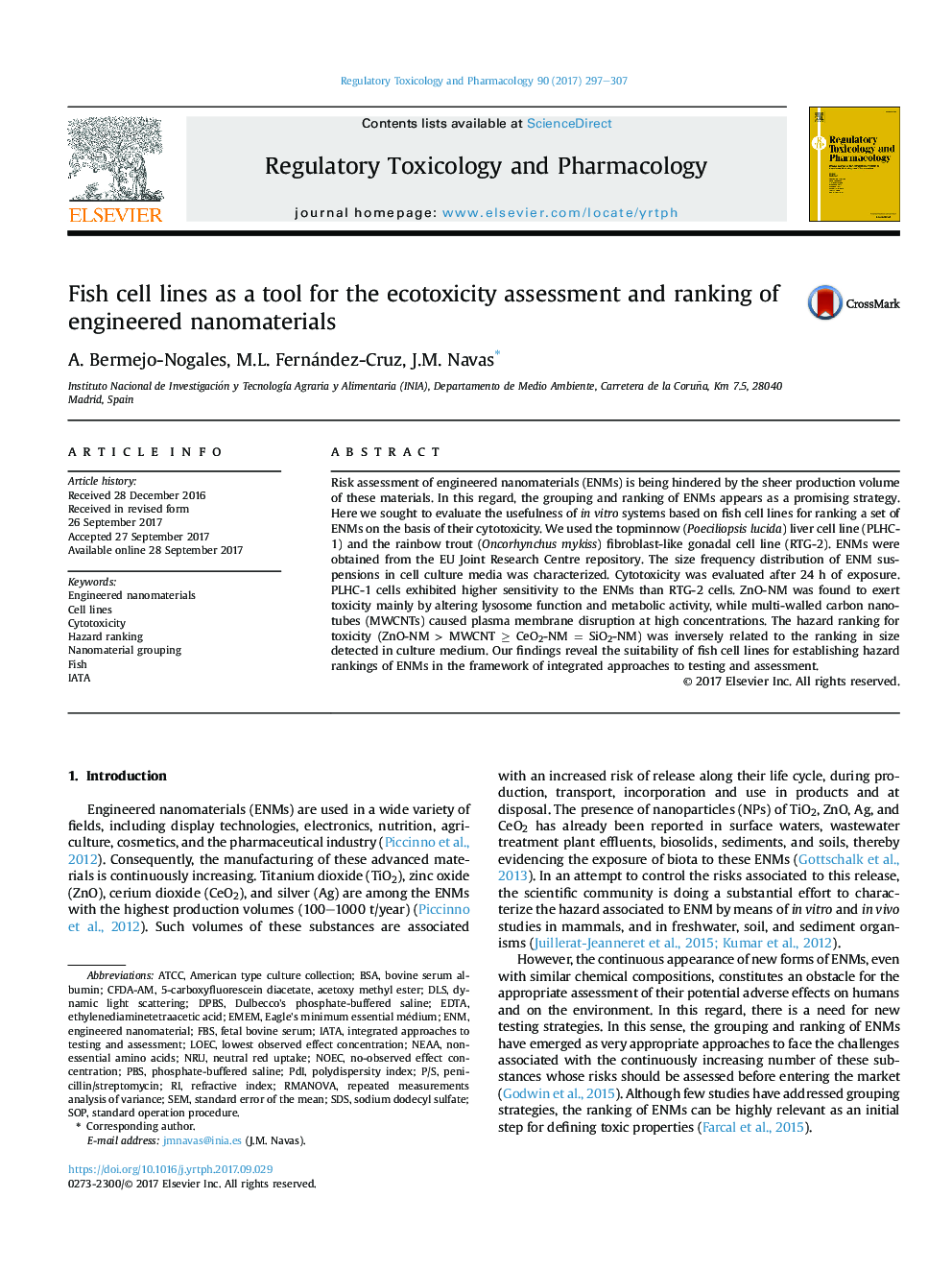| کد مقاله | کد نشریه | سال انتشار | مقاله انگلیسی | نسخه تمام متن |
|---|---|---|---|---|
| 5561114 | 1562113 | 2017 | 11 صفحه PDF | دانلود رایگان |

- The toxicity of engineered nanomaterials (ENMs) was studied in RTG-2 and PLHC-1Â cells.
- PLHC-1 (cultured at 30 °C) was more sensitive than RTG-2 cells (cultured at 20 °C).
- ENMs exhibited some degree of agglomeration/aggregation in culture media.
- The size of aggregates/agglomerates was inversely related to the toxicity.
- The observed toxicity ranking is ZnO-NM > MWCNT â¥Â CeO2-NM=SiO2-NM.
Risk assessment of engineered nanomaterials (ENMs) is being hindered by the sheer production volume of these materials. In this regard, the grouping and ranking of ENMs appears as a promising strategy. Here we sought to evaluate the usefulness of in vitro systems based on fish cell lines for ranking a set of ENMs on the basis of their cytotoxicity. We used the topminnow (Poeciliopsis lucida) liver cell line (PLHC-1) and the rainbow trout (Oncorhynchus mykiss) fibroblast-like gonadal cell line (RTG-2). ENMs were obtained from the EU Joint Research Centre repository. The size frequency distribution of ENM suspensions in cell culture media was characterized. Cytotoxicity was evaluated after 24 h of exposure. PLHC-1 cells exhibited higher sensitivity to the ENMs than RTG-2 cells. ZnO-NM was found to exert toxicity mainly by altering lysosome function and metabolic activity, while multi-walled carbon nanotubes (MWCNTs) caused plasma membrane disruption at high concentrations. The hazard ranking for toxicity (ZnO-NM > MWCNT â¥Â CeO2-NM = SiO2-NM) was inversely related to the ranking in size detected in culture medium. Our findings reveal the suitability of fish cell lines for establishing hazard rankings of ENMs in the framework of integrated approaches to testing and assessment.
Journal: Regulatory Toxicology and Pharmacology - Volume 90, November 2017, Pages 297-307